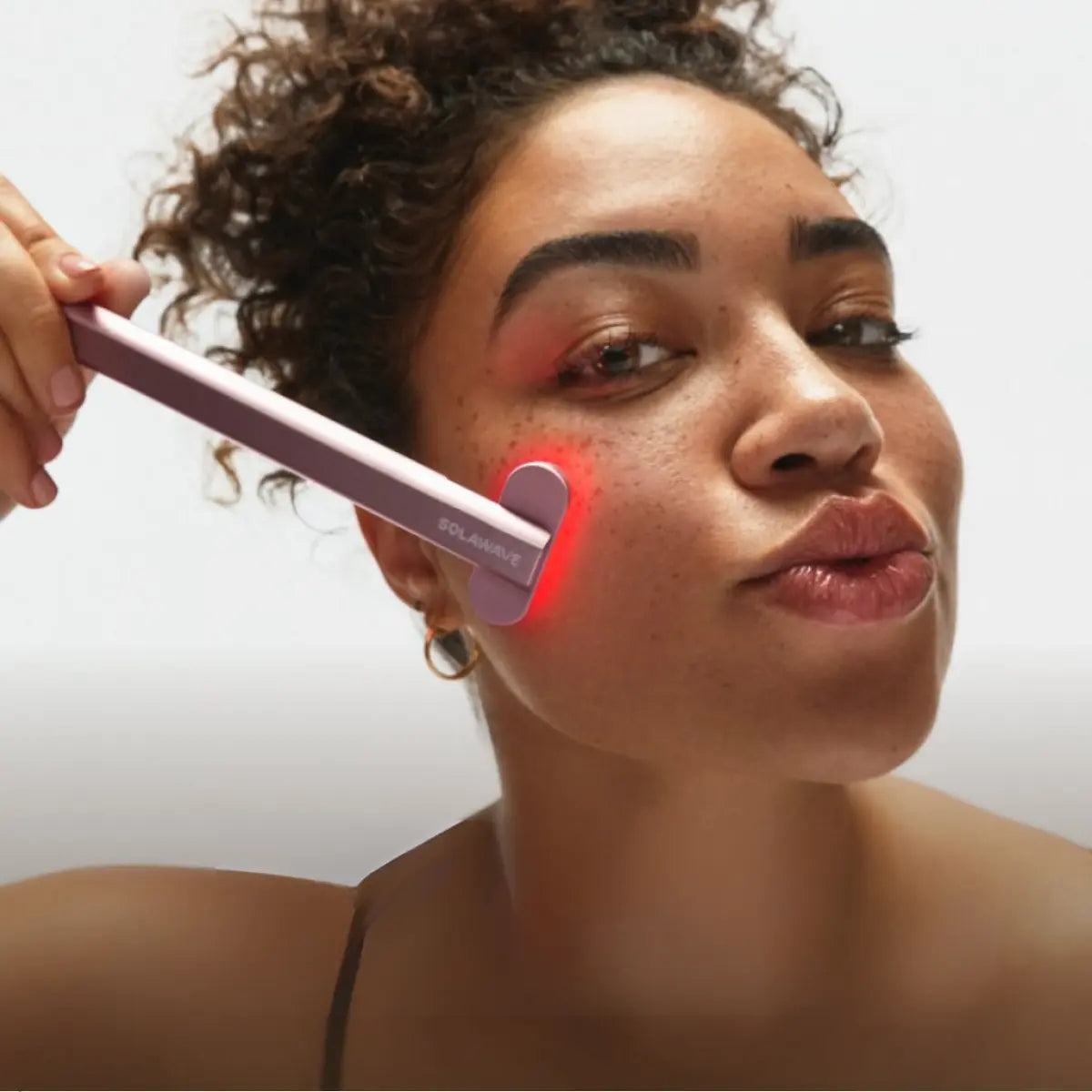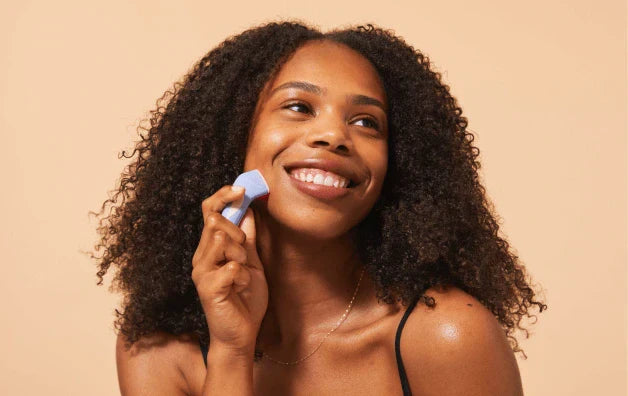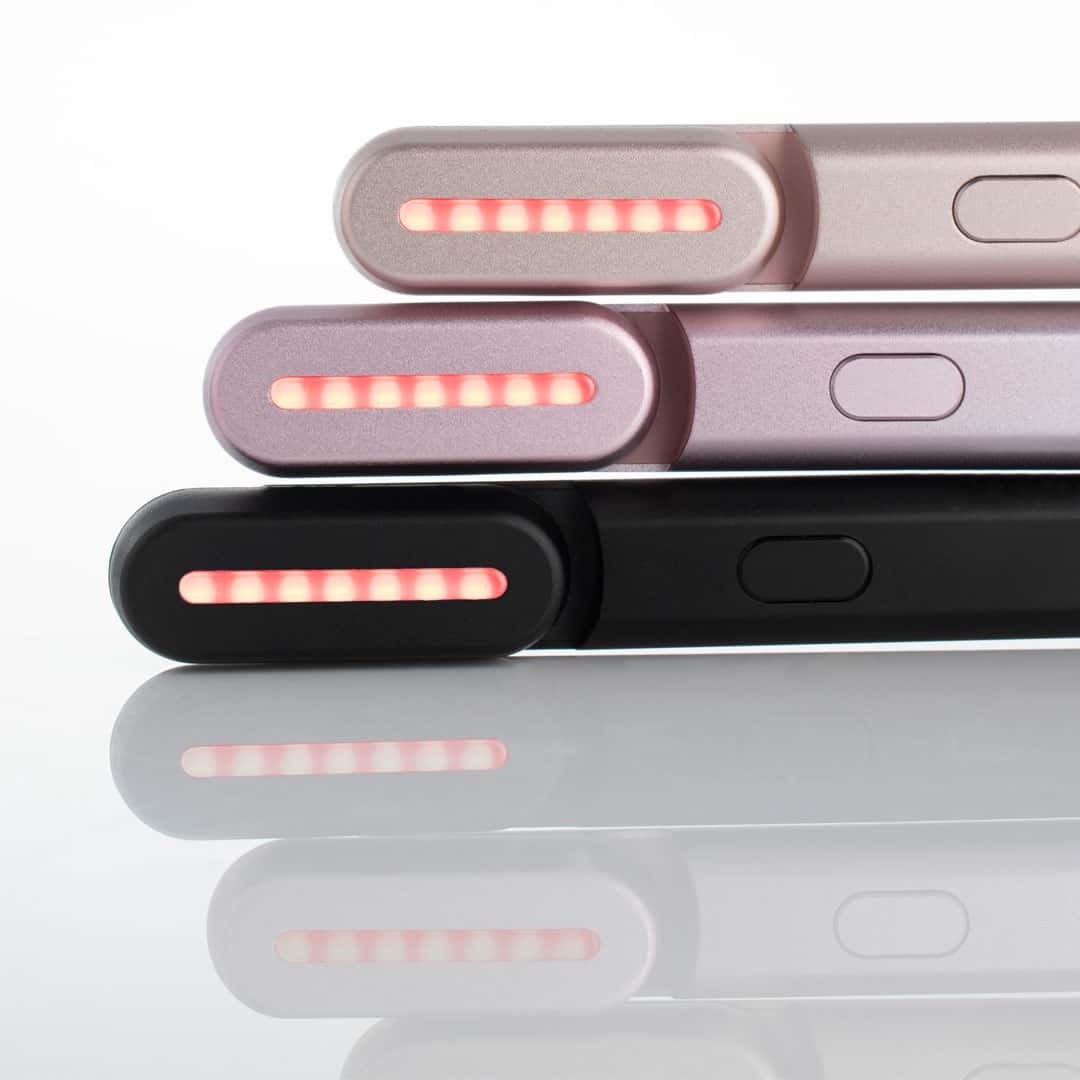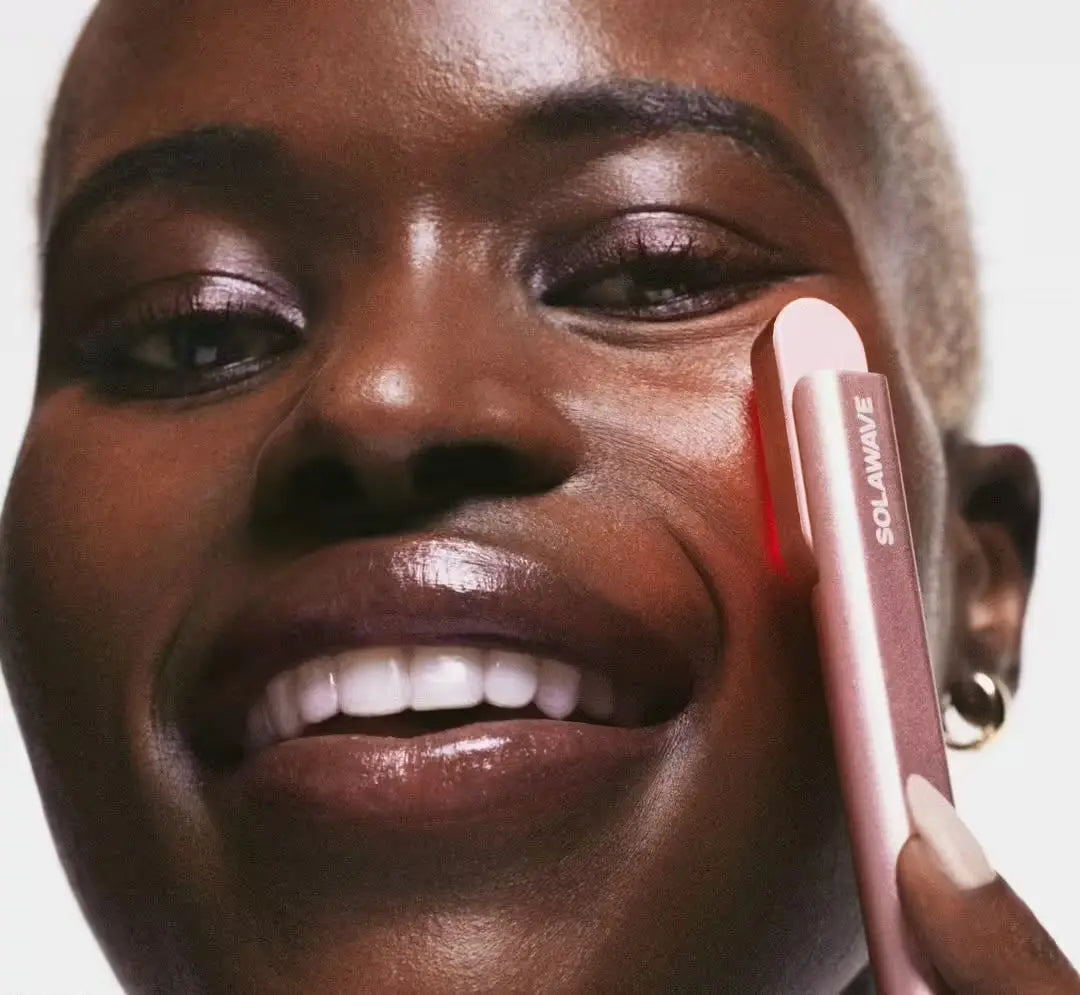 Blue Light Therapy
Blue Light Therapy

The Ultimate Guide To Blue Light Therapy
Blue Light Therapy is gaining attention as a gentle, non-invasive option for anyone looking to support a healthier-looking complexion. Unlike harsh chemical treatments, this approach uses targeted Blue Light to help you address visible skin concerns—especially if you’re dealing with frequent pimples. Here's Blue Light Therapy, explained, including how it can easily fit into an at-home daily skincare routine for breakout-prone skin.
What Is Blue Light Therapy?
Blue Light Therapy is a skincare treatment that uses specific wavelengths of blue light to address visible skin concerns. It’s part of the broader category of phototherapy, which uses different types of light to support skin health. When Blue Light is directed onto your skin, it interacts with oil glands and targets the bacteria that can cause pimples, specifically a type called P. acnes. This process helps destroy bacteria, visibly reduces inflammation, and supports balanced oil production. Over time, this can lead to a clearer, more radiant complexion. Blue Light Therapy is especially valued for being gentle, non-invasive, and easy to use at home with the right device.
How Blue Light Therapy Works
Blue Light Therapy works by using a specific wavelength of blue light that penetrates the upper layers of your skin. This light targets the bacteria responsible for causing pimples and helps break down their presence on the skin’s surface. As the bacteria are reduced, you may notice less inflammation and fewer new pimples forming. Blue Light Therapy also helps regulate oil (sebum) production, which means your skin can feel less greasy and more balanced. With consistent use, this process supports a visibly clearer complexion and helps you manage the appearance of pimples more effectively.
Key Benefits of Blue Light Therapy
-
Destroys Acne-Causing Bacteria: Blue Light Therapy targets and destroys the bacteria that contribute to pimples, helping you achieve a visibly clearer complexion.
-
Helps Regulate Sebum Production: By supporting balanced oil production, Blue Light Therapy minimizes the chances of clogged pores and reduces excess shine.
-
Offers Quick, Targeted Care for Pimples: Devices designed for Blue Light Therapy allow you to treat specific spots as soon as they appear, making it easier to manage sudden pimples.
-
Non-Invasive and Gentle: This treatment doesn’t require downtime or harsh chemicals, making it suitable for most skin types and easy to incorporate into your daily routine.
-
Can Be Used Alongside Other Skincare Products: Blue Light Therapy fits seamlessly with your favorite serums, moisturizers, and other treatments, helping you upgrade your routine without extra hassle.
Blue Light Therapy vs. Other Pimple Treatments
When exploring options for managing the appearance of pimples, you’ll find a wide range of treatments—from topical creams to more invasive procedures. Many topical products rely on strong ingredients that can sometimes cause dryness or irritation, while certain in-office treatments may require downtime and can feel harsh on sensitive skin.
Blue Light Therapy stands out as a gentle, non-invasive, and chemical-free approach. It targets the bacteria and excess oil that contribute to pimples without the need for harsh ingredients or recovery time. This makes it an appealing choice if you’re looking for a way to support a clearer complexion while keeping your routine simple and comfortable.
You can also combine Blue Light Therapy with other advanced treatments, such as Red Light Therapy, for a more comprehensive approach. While Blue Light targets the bacteria and oil linked to pimples, Red Light Therapy supports healthy collagen production and helps reduce the look of redness that can follow a breakout. Using both therapies together allows you to address multiple skin concerns at once, helping you achieve a more balanced, radiant appearance.
Choosing the Best At-Home Blue Light Therapy Device
When you’re looking for an at-home Blue Light Therapy device, you’ll notice a variety of options—ranging from large panels to hand-held tools and spot treatments. Each style offers unique benefits, but for most people, convenience, precision, and ease of use are key.
Spot treatment devices, like the Solawave Bye Acne 3-Minute Pimple Spot Treatment Device, are especially popular because they allow you to target specific areas quickly and effectively.
The Bye Acne device stands out for its dual-action technology, combining both Blue Light and Red Light Therapy in one FDA-cleared, esthetician-tested tool. Blue Light helps eliminate acne-causing bacteria and reduce excess oil, while Red Light supports the look of reduced inflammation and redness. This portable, rechargeable device is lightweight and easy to use at home or on the go, making it a smart choice for anyone who wants a simple, effective solution for managing the appearance of pimples.
For added care, the Bye Acne Pro Kit also includes serum-infused Microdart Patches. These hydrocolloid patches are packed with soothing ingredients like niacinamide, green tea, and gotu kola to calm and support your skin after light therapy. The combination of targeted light treatment and post-care patches helps you address every stage of a breakout, from the first sign of a pimple to visible recovery.
How To Use Blue Light Therapy Devices for Breakouts
To get the most out of your Blue Light Therapy device, always follow the manufacturer’s instructions and safety guidelines.
The Bye Acne device is designed for safe, targeted use, but it’s important to read the instruction manual before your first session and check for any contraindications.
Here’s a simple step-by-step guide to using the Bye Acne 3-Minute Pimple Spot Treatment:
-
Cleanse Your Skin: Start with a freshly cleansed face. Remove all makeup, sunscreen, and excess oil to ensure the Blue Light can reach your skin effectively.
-
Activate the Device: Power on the Bye Acne device by holding down the power button.
-
Apply to Targeted Areas: Place the device directly over the pimple or spot you want to treat. Hold it in place until the 3-minute treatment ends automatically.
-
Repeat as Needed: Move the device to other spots as needed, following the same process. Treat only clean, dry skin and avoid overlapping sessions on the same spot.
-
Incorporate Into Your Regular Routine: For best results, use your Bye Acne device consistently as part of your daily skincare routine. Most users benefit from daily use until the appearance of pimples is visibly reduced, then as needed for maintenance.
-
Clean and Store the Device: After each session, gently wipe down your device with a soft, damp cloth or a device-friendly wipe. Store it in a cool, dry place so it’s ready for your next treatment.
For extra post-treatment care, apply a serum-infused Microdart Patch to the treated area. Press firmly for 20 seconds and leave it on for at least four hours or overnight to help calm and soothe your skin.
The Bye Acne device is designed for healthy adults and is not recommended for those under 18, pregnant or breastfeeding, or with certain medical conditions. Always review the full list of contraindications and consult with your healthcare provider if you have any concerns.
Frequently Asked Questions About Blue Light Therapy
What is Blue Light Therapy and how does it work? Blue Light Therapy is a gentle, non-invasive skincare treatment that uses a specific wavelength of blue light to target the bacteria and excess oil that can contribute to pimples. When directed onto your skin, the blue light helps eliminate acne-causing bacteria and supports balanced oil production. This process can visibly reduce inflammation and help you achieve a clearer, healthier-looking complexion over time.
Is Blue Light Therapy safe for all skin types? Blue Light Therapy is generally considered safe for most skin types and is designed to be gentle and non-irritating. Devices like the Bye Acne 3-Minute Pimple Spot Treatment are FDA-cleared and esthetician-tested for safety. However, it’s important to review the device’s contraindications—such as avoiding use if you are under 18, pregnant, breastfeeding, or have certain medical conditions. Always follow the manufacturer’s instructions and consult with your healthcare provider if you have concerns.
Can Blue Light Therapy help with acne scars or hyperpigmentation? Blue Light Therapy is primarily used to target mild to moderate pimples and reduce visible inflammation. While it’s not specifically designed for acne scars or hyperpigmentation, other forms of Light Therapy, such as Red Light and Amber Light, can help improve the look of uneven skin tone and support the appearance of post-acne marks when used consistently as part of your skincare routine.
How does Blue Light Therapy compare to Red Light Therapy? Blue Light Therapy and Red Light Therapy each offer unique benefits for your skin. Blue Light Therapy is best for targeting acne-causing bacteria and reducing excess oil, making it ideal for managing the appearance of pimples. Red Light Therapy, on the other hand, supports healthy collagen production and helps reduce the look of redness and visible signs of skin aging. Many people choose to combine both therapies for a more comprehensive approach to skincare.
Can you use Blue Light Therapy with other skincare treatments? Absolutely. Blue Light Therapy can be used alongside your favorite serums, moisturizers, and sunscreen. It also pairs well with other forms of Light Therapy, such as Red Light, for enhanced results. Just be sure to use the device on clean, dry skin and follow up with your regular skincare products.
How often should you use a Blue Light Therapy device? For best results, use your Blue Light Therapy device regularly, following the manufacturer’s instructions. Most users benefit from daily or near-daily sessions, especially during active breakouts. Consistency is key—regular use helps maintain a visibly clearer complexion and supports ongoing skin health.






